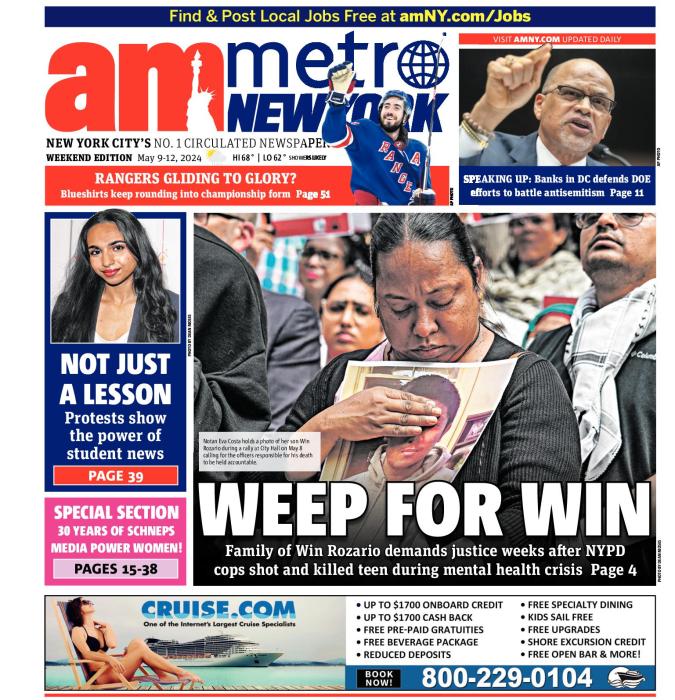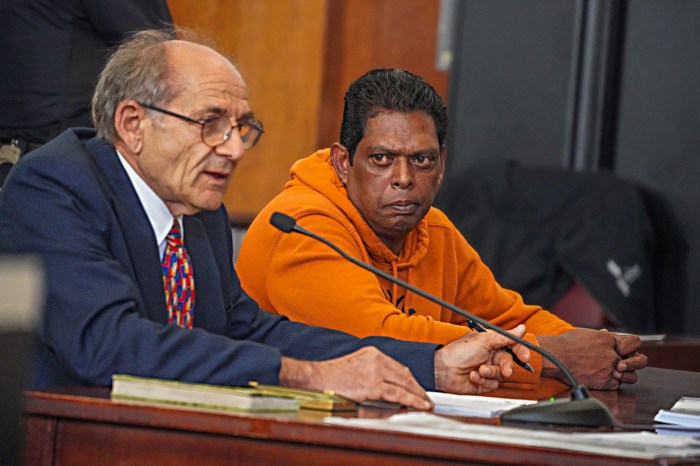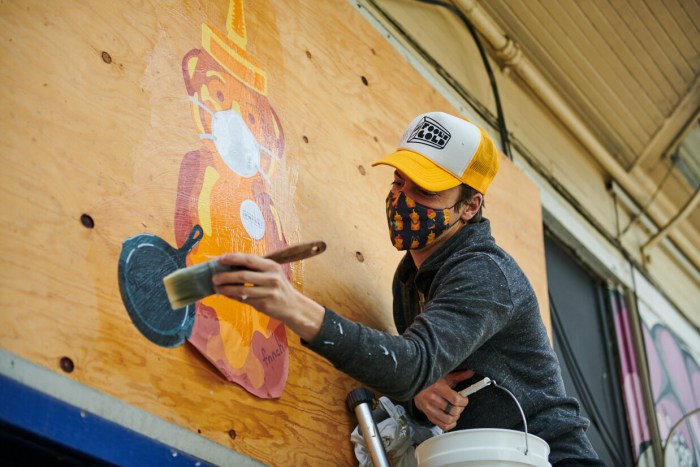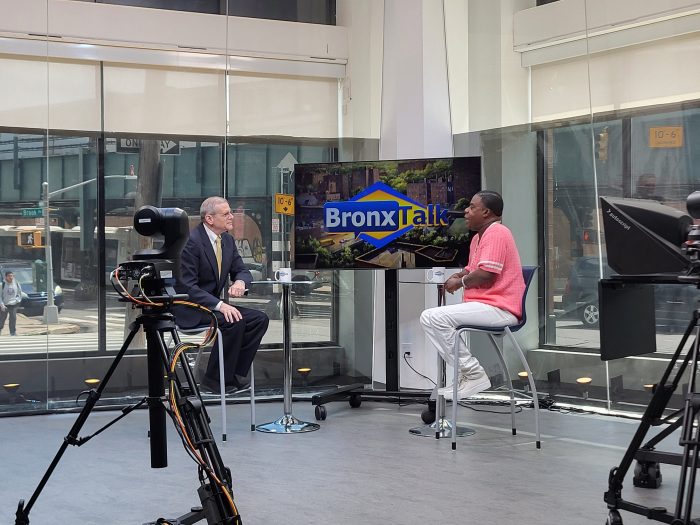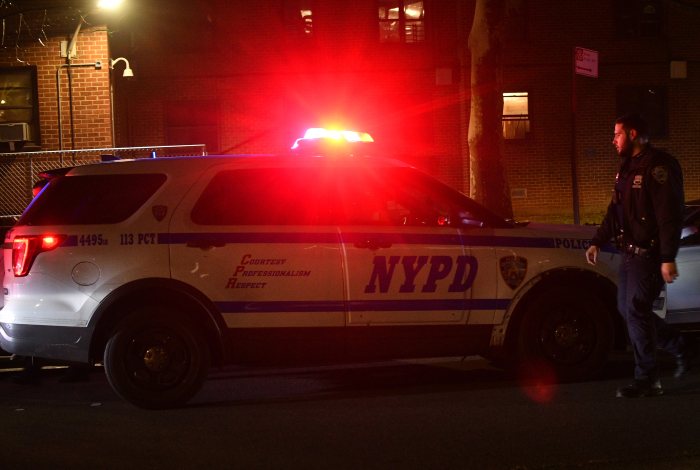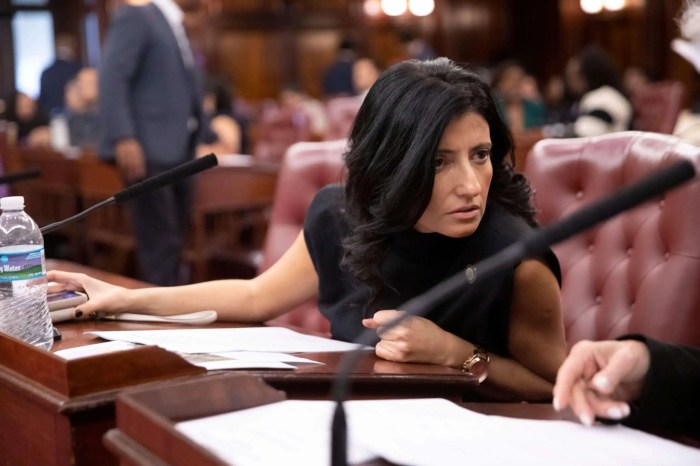By Erin Walsh and Nathan Duke
New York University students and administrators are reeling in the aftermath of what appears to be the third student suicide in five weeks. Last Saturday around 9:45 p.m., Michelle Gluckman, a 19-year old from Brooklyn, plunged through a sixth-floor window of 1 University Pl., a private apartment building near Washington Sq. Park in which N.Y.U. rents some of the apartments.
Gluckman’s suicide closely follows the suicides of Steven Bohler, 18, and John Skolnik, 20, two N.Y.U. students who jumped to their death from the 10th floor of N.Y.U.’s Bobst Library.
Gluckman was a sophomore General Studies student who lived in the university’s Third Ave. North residence hall at 75 Third Ave. According to Ryan O’Neil, 23, a doorman at 1 University Pl., Gluckman was visiting two residents of 1 University Pl. when she plunged through the window, landing in the second-story courtyard below, between the building and Weinstein Hall, an N.Y.U. dormitory. O’Neil said he heard that Gluckman tried to jump out the window and her friends tried to hold her back.
Gluckman’s official cause of death has yet to be determined, but Detective Gifford of the Police Department’s press office, speaking Saturday morning, called it a “cut and dry suicide.”
John Beckman, the university’s spokesman, cautioned against lumping the three suicides together as any sort of trend.
“We want to have answers and solutions because we’ve had three young persons die in such a short span of time,” Beckman said. “There is a natural and flawed inclination to group them all together. That is a problematic road to go down. They are products of individual histories, individual problems and individual emotions.”
Yet this latest death in such a period of time has many N.Y.U. students wondering what to make of what appears to be a suicide epidemic.
“I’m just very surprised, especially since the deaths were so close and the way that they all died was so similar,” said Alex Lam, 18, an N.Y.U. freshman.
No one is certain what ramifications these deaths will have for the entire student body or even if the recent string of suicides is coming to a halt. On Monday morning, two visibly shaken female College of Arts and Science students, who did not wish to be identified, arrived at the University Counseling Services center, at 726 Broadway, to discuss their friend’s suicide attempt. One of the pair, a C.A.S. freshman, said that her friend, who had exhibited signs of depression in the past, had tried to take her own life by overdosing on pills.
Although most students aren’t comfortable speculating as to whether there is a causal link between the suicides, those interviewed attributed the probable causes to N.Y.U.’s decentralized, urban location and stressful academic climate.
“It’s easy for people to fall through the cracks here,” said Rachel Doyle, 19, a sophomore. “It’s like once you’re not living in a freshman dorm and not close to R.A.’s, it’s harder to know where to get help.” Student R.A.’s, or resident assistants, live in the dormitories and provide informal counseling to students, help watch out for them and provide conflict resolution.
Clint Creasy, 19, a sophomore, said that the urban campus setting can be very alienating at times, especially if one lives off campus in an apartment like he did his freshman year.
“It’s just not a social atmosphere,” said Creasy. “It’s very easy to slip into solitary confinement, especially if you don’t live in a residence hall. You have to form a support system yourself.”
However, Doyle said she thought the two suicides that occurred in the library were linked to academic pressures.
“I feel overwhelmed constantly, especially around midterms, but that’s pretty normal and you have to realize that everyone goes through it,” she said.
Craig Kleeman, 20, an N.Y.U. sophomore, said he felt the suicides could not be attributed to any one problem, but rather were a result of several conditions.
“Academic pressure and isolation is a bad mix,” said Kleeman. “If you’re going to put kids under that kind of pressure, then you have to be prepared to deal with the problems.”
Since the second suicide occurred at Bobst on Oct. 10, the university has taken preventative measures that include the installation of glass barriers on the library’s balconies on the higher floors.
University officials have been responding promptly in the wake of each suicide by sending mass e-mails to the N.Y.U. community. Marc Wais, vice president for student affairs, issued a statement on Sunday afternoon announcing the availability of emergency counseling services for students in the Third Ave. North residence hall and at the University Counseling Center.
Similar measures were taken immediately following Bohler’s Oct. 10 death, but no official recognition was given to the Sept. 12 suicide of Skolnik, the first Bobst suicide.
While many students report satisfaction with how the administration is handling the string of suicides, others are more critical.
“It’s really disturbing,” said Doyle. “For one, they didn’t tell us about the first until the second. Also, why didn’t they start putting up the things in the library sooner?”
To the charge that isolation may have contributed to the three students’ suicides, Beckman noted all three lived in university dormitories. Beckman said that for a college-age population, the expected suicide rate is one per 10,000 per year. He added that in the five previous years, there had been no suicides among N.Y.U.’s students — including 19,000 undergraduate students and 18,500 graduate students — a rate he called “remarkably low.”
As to why the first suicide wasn’t more publicized, Beckman said schools have to balance families’ needs for privacy with getting information out, as well as the concern that media reports and communications by the school “may be harmful to those in a fragile and vulnerable state” — or, in other words, trigger similar incidents.
” width=”150″ height=”42″ border=”0″>
” width=”150″ height=”47″ border=”0″>
